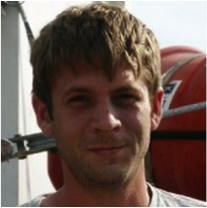What's Above a Mooring?

Associate Scientist
Woods Hole Oceanographic Institution
Woods Hole Oceanographic Institution
Dr. Farrar received his Ph.D. in Physical Oceanography from the MIT-WHOI Joint Program in Oceanography. His research interests include air-sea interaction and exchange; dynamics and thermodynamics of the upper ocean; tropical dynamics and equatorial waves; oceanic internal waves and eddies; satellite oceanography; and ocean observing and instrumentation.
Webinar Clip
To measure things like ocean surface salinity, or freshwater flux for a patch of ocean water, scientists need the right equipment. One way to collect lots of data from a single point in the ocean is to launch a surface mooring into the water, equipped with all of the necessary oceanographic technology. While at-sea, this mooring and its instrumentation will collect continuous data, allowing scientists to see how things like temperature and salinity from that point have changed over time. Dr. Farrar shows us what that instrumentation looks like and how much equipment can fit one one of these large surface moorings!Full webinar: Ocean Thinking: Balanced Budget? Oh, Buoy!
Click here for a transcript of this clip (PDF, 35.8 KB). |
Resources
Applicable Science Standards
 Asking Questions and Defining Problems. A practice of science is to ask and refine questions that lead to descriptions and explanations of how the natural and designed world(s) works and which can be empirically tested.
Asking Questions and Defining Problems. A practice of science is to ask and refine questions that lead to descriptions and explanations of how the natural and designed world(s) works and which can be empirically tested. Planning and Carrying Out Investigations. Scientists and engineers plan and carry out investigations in the field or laboratory, working collaboratively as well as individually. Their investigations are systematic and require clarifying what counts as data and identifying variables or parameters.
Planning and Carrying Out Investigations. Scientists and engineers plan and carry out investigations in the field or laboratory, working collaboratively as well as individually. Their investigations are systematic and require clarifying what counts as data and identifying variables or parameters. Obtaining, Evaluating, and Communicating Information. Scientists and engineers must be able to communicate clearly and persuasively the ideas and methods they generate. Critiquing and communicating ideas individually and in groups is a critical professional activity.
Obtaining, Evaluating, and Communicating Information. Scientists and engineers must be able to communicate clearly and persuasively the ideas and methods they generate. Critiquing and communicating ideas individually and in groups is a critical professional activity.